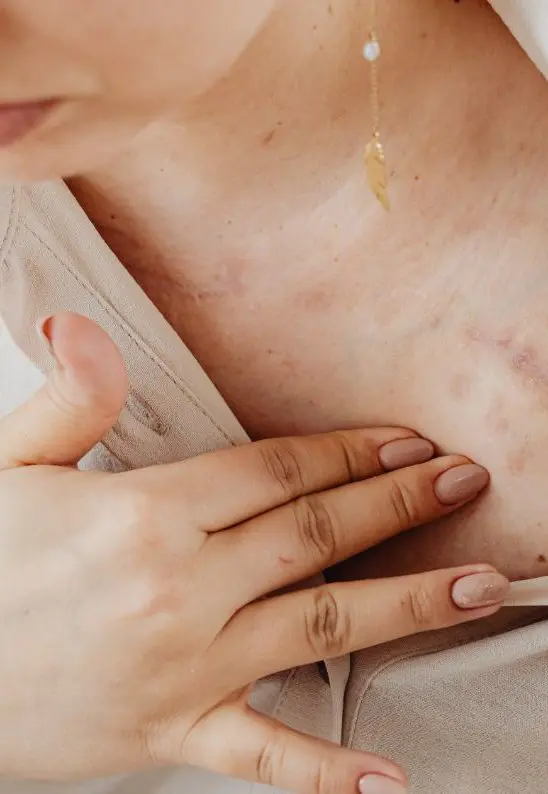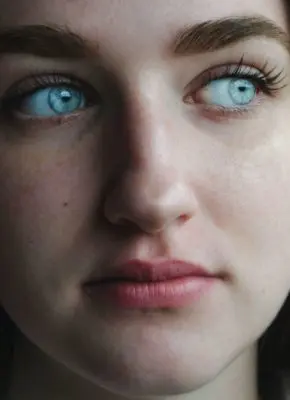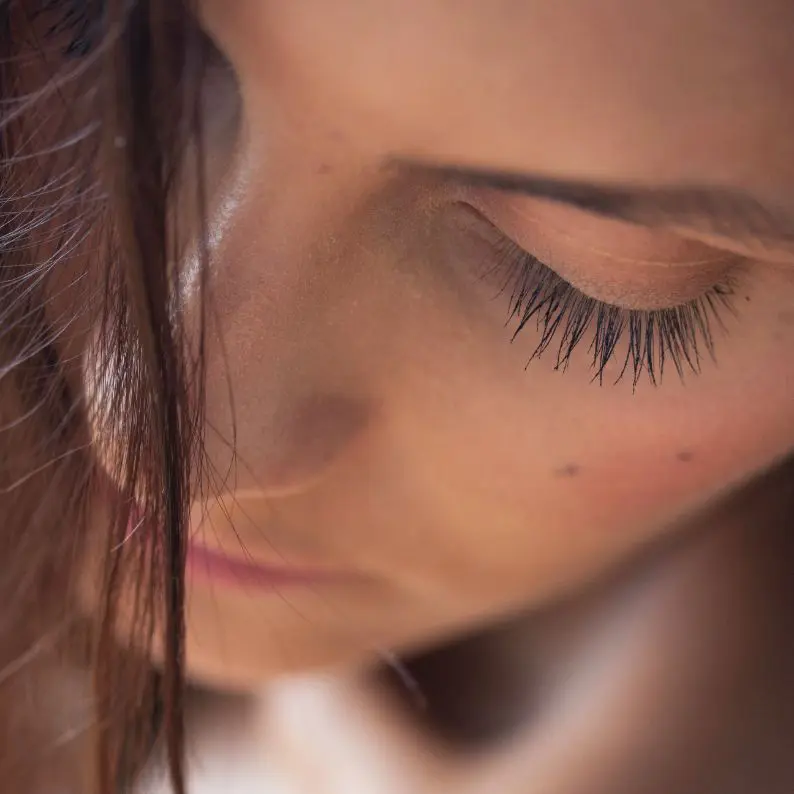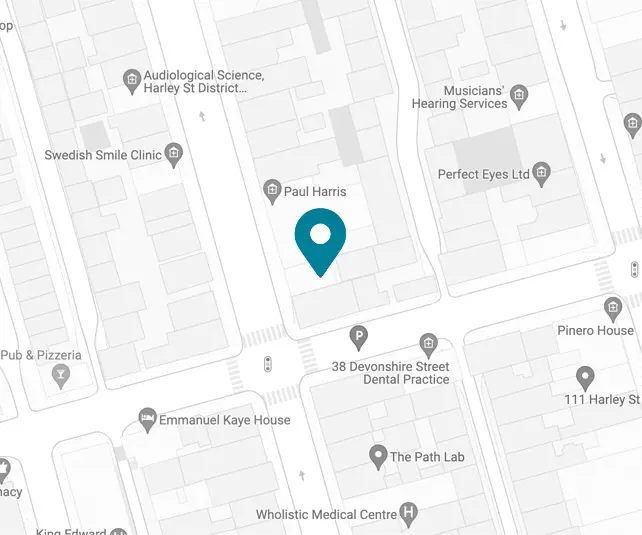Scars
Scars are marks left on the skin after a wound or injury has healed. A wound heals in three distinct phases: the inflammatory phase, proliferative phase and remodelling phase. The body’s initial response is to try and minimise the extent of injury; this is known as the inflammatory phase. Once the injury is controlled, the body will begin to construct new ‘granulation’ tissue to replace that which has been lost; this is known as the proliferative phase. Finally, the body will convert this granulation tissue into a scar; this is known as the remodelling phase. The remodelling phase is a lengthy process that can take up to 1 year to complete; during this time the scar often becomes smaller and more pale in colour. We can improve on the appearance of scars by repeatedly stimulating the remodelling phase of scar healing. Treatments such as microneedling and laser resurfacing help the scar to further remodel into healthy skin.

Treatment Options
The over-production of pigment in scars is known as post-inflammatory hyperpigmentation (PIH). At Drs Tatiana + Rishi Advanced Aesthetics, we treat PIH by reducing inflammation, blocking the production of new pigment and accelerating the shedding of existing pigment. This is best done using topical skin products containing evidence-based ingredients such as vitamin A and C, hydroquinone, kojic, glycolic and tranexamic acid.
At Drs Tatiana + Rishi Advanced Aesthetics, scar redness is effectively treated using the gold standard vascular laser, ExcelV+. The ExcelV+ vascular platform contains multiple laser wavelengths to specifically target haemoglobin within the vessels resulting in the closure of select blood vessels, thereby reducing scar redness.
Drs Tatiana + Rishi Advanced Aesthetics pioneered this approach, whereby RF microneedling is immediately followed by CO2 laser. to provide a highly effective treatment for acne scarring, with minimal downtime. This combination approach has a synergistic effect, where the RF microneedling results in mechanical breakdown of scar tissue and fibroblast stimulation; whilst the CO2 laser causes epidermal neocollagenesis and resurfacing. Due to the re-modelling stimulated by the RF microneedling, less aggressive CO2 resurfacing is required to achieve comparable results, minimising downtime.
Immediately following this treatment, we often recommend application of exosomes. Exosomes are micro-vesicles that contain thousands of growth factors, cytokines and nutrients that help to boost collagen, elastin and natural hydration. Exosomes work to regenerate skin cells, reduce inflammation and pigmentation, improve immune function and accelerate skin healing.
Microneedling is a treatment that involves tiny needles that stimulate skin repair and create channels into the skin, enabling the absorption of nutrients applied to the skin surface. The depth of needling and choice of topical nutrients will impact on the results seen. Topical nutrients can include:
- Vitamins, minerals and antioxidants: to improve skin vibrancy and hydration
- Acid peel: to resurface scars and improve skin texture
- Hydroquinone: to fade pigmentation
Morpheus 8 is a device that combines microneedling with radiofrequency heat energy. As the small needles enter the skin, the needles break up scar tissue and their tips deliver heat via radiofrequency energy. This process stimulates collagen, elastin and hyaluronic acid production, thereby remodelling the skin and reducing scars. Morpheus 8 is safe for any skin type and can be used alongside other treatments such as dermal fillers.
Immediately following Morpheus 8 treatment, we often recommend application of exosomes. Exosomes are micro-vesicles that contain thousands of growth factors, cytokines and nutrients that help to boost collagen, elastin and natural hydration. Exosomes work to regenerate skin cells, reduce inflammation and pigmentation, improve immune function and accelerate skin healing.
SecretRF is an evolution of microneedling with radiofrequency. This device works by precisely inserting small needles into the skin (at gradations of 0.1mm), creating microchannels, with the subsequent delivery of radiofrequency heat energy to stimulate the production of collagen, elastin and hyaluronic acid. This process remodels the skin, thereby reducing scarring. The motor mechanism of the SecretRF is extremely smooth and it’s needles particularly precise and well-insulated, resulting in minimal downtime and being suitable for all skin types.
Immediately following SecretRF treatment, we often recommend application of exosomes. Exosomes are micro-vesicles that contain thousands of growth factors, cytokines and nutrients that help to boost collagen, elastin and natural hydration. Exosomes work to regenerate skin cells, reduce inflammation and pigmentation, improve immune function and accelerate skin healing.
The principle of skin resurfacing is to inflict a controlled injury to the skin; the injured skin then repairs and creates new collagen, elastin and skin hydrators. This process converts scarred skin into healthy skin. Within safe limits, a greater injury will stimulate greater remodelling of the scar tissue. Carbon dioxide (CO2) laser resurfacing is the gold standard treatment for acne scars. Please ensure the link to the treatment page; ‘Laser skin resurfacing’ is correct.
For patients with darker skin types, conventional acne scar treatments like CO2 lasers that involve heat trauma, increase the risk of complications such as post inflammatory hyperpigmentation. Unlike traditional lasers, which use nanosecond pulses, picosecond lasers deliver laser energy in extremely short picosecond pulses. This ultra-short pulse duration produces a photo-acoustic effect, working to shatter areas of acne scarring with minimal heat and damage to the surrounding skin. This reduced heat generation helps minimise the risk of thermal damage to the surrounding skin and lowers the chance of post-inflammatory hyperpigmentation, whilst stimulating the production of collagen, elastin and hyaluronic acid.
Immediately following this treatment, we often recommend application of exosomes. Exosomes are micro-vesicles that contain thousands of growth factors, cytokines and nutrients that help to boost collagen, elastin and natural hydration. Exosomes work to regenerate skin cells, reduce inflammation and pigmentation, improve immune function and accelerate skin healing.
Polynucleotides are the building blocks of DNA and RNA – nucleic acids that give the instructions for cell function, regeneration and gene expression. As polynucleotides are broken down in our body, they promote DNA synthesis, increase cell regeneration and the production of collagen, thereby reducing the appearance of scars.
Biostimulation involves the use of external stimuli to harness the body’s own regenerative capabilities to promote collagen production, improve skin elasticity, and promote overall rejuvenation. By activating cellular mechanisms, biostimulation can help re-model scars and improve skin texture. At Drs Tatiana + Rishi Advanced Aesthetics we use biostimulators including Platelet-Rich-Plasma (PRP), those that contain poly-L-lactic acid (PLLA), e.g. Sculptra and those containing polynucleotides.











